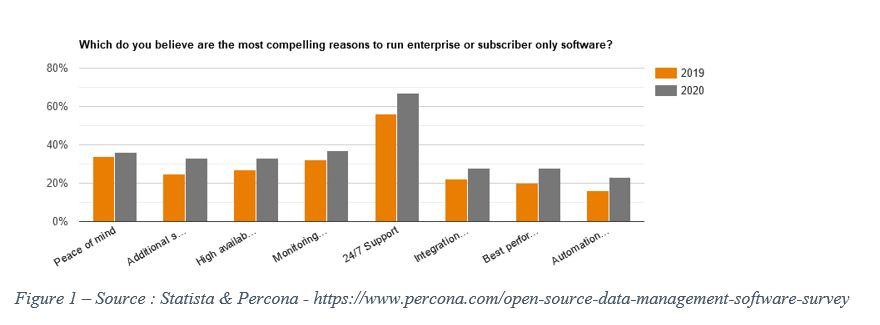Values of Professional Services in Open Source

The open-source movement started in the 1980s by Richard Stallman with the main objective of creating the concept of “free software” and freely shared source code in a community environment.
The term "free software" is comparable to the term "free speech": it is free to use, run, copy distribute, study change and improve. "Free software" is not comparable to "free beer": it is not without associated cost or price.
The open-source projects’ resources – either developers, financial or management/governing bodies – have traditionally been managed in “do-ocracy” or founder-leader governance models. These models, as history showed us, led to the collapse of the project or to the deviation of the project initial core objectives. Many of these issues were related to the failure to coordinate a collective action and gather consensus on the strategy and path to follow, and on the scalability of the project.
The projects that managed to thrive and are still successful today adopted different governance structures and are foundation-based or corporate-based. These models bring stability and long-term direction to the project, but they have associated costs that need to be covered or funded.
Open-source projects have a range of models for funding, with the most common being donations, merchandise (e.g., Mozilla), crowdsourcing, software-as-a-service subscriptions and professional services (e.g., RedHat, IBM). These different models of funding are also closely connected to stability – or not – of the revenue/cash flows that support the speed and growth of features, developments and project activities and dissemination.
An open-source project that wants to be successful and exist in the long run must consider how the spirit and goals of the project should be governed and developed, and then how to finance the activities defined by the governing body – in essence, how to be sustainable over time.
Let’s focus on one of the scenarios, where an open-source project has a foundation-based governing body comprised of community members and corporations.
Corporations that invest in developing an open-source project may do it either with cash financing or by contributing developer resources, and those corporations need to generate revenue to make their activities sustainable.
Corporations that operate in the professional services sphere sell a range of services – hosting, training, technical support, consultancy, and custom developments – to customers who adopt open-source solutions.
The first big value that corporations bring when operating in open-source software is credibility, which is one of the major considerations when we are talking about B2B models. Customers will only buy a service/product if there is trust.
Let’s then consider other aspects such as training, technical support, consultancy, and custom development. What is the value that corporations provide by offering these professional services
While technical documentation in open-source projects is often an Achilles heel-like weakness – with little or no documentation or information available – corporations fill that need with training services and certification programs. By contributing documents to the community, they help build trust around the product.
Hosting and technical support under professional services contracts allows the customer to have a structure that brings stability and a resource to call when something doesn’t work. In open-source projects, the community exists for answering questions – but it’s on a best-effort paradigm. Companies that adopt open-source projects have deadlines and SLAs to deliver to their customers, so they need to have a provider that can deliver quality and trust.
Consultancy and custom developments of new features introduce a way for open-source products to flexibly meet a customer’s needs at the time of adoption and over long-term product usage. This provides true value for the customer that can have a feature developed specifically for their needs; whereas, in proprietary software this new feature/requirement would never be delivered unless it aligned with a global company strategy.
These custom developments raise questions such as: Should the code be contributed to the community? The totality of the code or just partially? What is the maintenance path? Is it by the community or under a professional services contract?
On a higher perspective, and aligning with community needs, professional services can be contracted to develop a feature required by several community users/companies that then share the cost and ownership of the project.

Professional services in these scenarios handle the needs from the community and the cashflows to the companies that operate in open-source markets.
A recent worldwide survey published at Statista, which covers the last six years, shows that revenue from open-source services has been growing in a table manner reflecting the demand by the market. The volume of sales tripled in the study period.
The study incorporates information from renowned names of open-source supportive corporations such as IBM (US), SUSE (Germany), Percona (US), MuleSoft (US), Wipro (India), Accenture (Ireland), Evoke Technologies (US), Cisco Systems (US), Infosys (India), HPE (US), ViSolve (US), Chetu (US), HashiCorp (US), and Databricks (US).
An additional study from Percona and published on Statista collected information on the reasons why companies choose open-source software and have a subscription of services associated.

The study clearly highlighted the most compelling reasons to adopt open-source, reasons which in the past were blockers. These include 24/7 support, training, monitoring, integrations and high availability, each of which brings peace of mind to the decision maker.
As a conclusion, it’s clear that professional services create value and bring stability to the adoption of open-source software. Open-source software that is free means that the license might not have a cost, but all the other costs (training, hosting, communications, support, etc.) are the same as proprietary software.
When comparing open-source and proprietary software today, it's clear that free software is an advantage considering that all other services are available and comparable.
Photo Amy Hirschi de Unsplash
Please sign in or register for FREE
If you are a registered user on EBSCO Community, please sign in